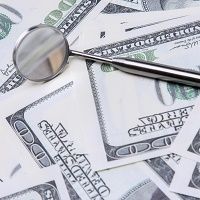Data Suggest Dentists Earning More, But Working Less
A review of data from the American Dental Association and other sources suggest dental income has increased over the past quarter-century, though many dental practices aren't working at capacity.

Dentists in general are making more money, working slightly less, and seeing fewer patients than they were 25 years ago, according to American Dental Association (ADA) statistics.
Experts say there are a variety of reasons for this change.
“A lot of dentists have gone to three or four days a week and they are still making the same amount of money they used to,” said Jim Ferrell, a long-time observer of the industry and editor of dentalfax.com. Improvements in technology, more expensive procedures, and the aging of the dental workforce are among the reasons for this shift, according to Ferrell and others.
In 1990, all dentists in primary private practice were working an average of 1,811 hours a year, which is roughly the equivalent to a five-day work week with four weeks’ vacation, according to survey data from the ADA’s Health Policy Institute (HPI). By 2014, all dentists surveyed were working an average of 1,654 hours for the same time frame, which equals just a little more than a four-day work week. This is a drop in time spent working of about 9%.
Dentists also are working less than they were 25 years ago, in terms of the number of patient visits per dentist and their hygienists. The visits dropped from 3,891 per year to 3,307, a decline of about 15%.
Meanwhile, median annual net earnings for all dentists in private practice jumped about 17% between 1990 and 2014, according to another HPI statistical survey. In 1990, the median annual net average for all dentists in primary private practice was $144,903 in inflation-adjusted dollars compared with $170,000 in 2014.
How has this happened?
Dentists tend to work less as they move toward retirement and as they postpone retirement, Marko Vujicic PhD, the ADA's chief economist, said. In 2001, 8.7% of all dentists were 65 or older and 14.1% were by 2013, according to another ADA survey.
The growth of higher tech and more expensive procedures perhaps has been a bigger influence on the time-dollars equation, according to Ferrell. Digital dentistry allows dentists to work more efficiently, detect more problems, and work with materials in-house. For example with CAD technology a dentist can now craft a crown in his office rather than send an impression out to lab. More cosmetics and expensive procedures such as Invisalign braces are being done by general dentists as well.
The decline in hours worked may not be entirely voluntary. An ADA statistical survey last year showed that in 2014 about 37% of all dentists reported they were "not busy enough,” a trend that Carol Gomez Summerhays, DDS, the ADA president, noted in a newsletter last year. “We know that dentists are not as busy as much as they’d like to be — most practices are under capacity,” she said. “So, we have to increase the number of people who see a dentist, because the need is there but the demand isn’t.”
The drop in demand also may be one reason why the 25-year comparison of hours worked and income is more positive than more recent earnings shifts for dentists. In 2007, the median annual net income for all dentists hit a pre-recession peak of $205,518 (adjusted for inflation), according to the ADA survey data. By 2014, dentistry had not completely recovered from The Great Recession and regained its former earning capacity, an ADA research brief published at the end of last year said. "Recent analysis shows that a 'new normal' may be emerging in terms of demand for dental care and dentists' average net income," Vujicic and his co-author wrote in a December 2014 paper on dental earnings.
Still dentistry was named the second of the 100 best jobs and number two in the healthcare profession and number nine among the best paying by US News & World Report in its 2016 best jobs rankings. “A comfortable salary, low unemployment rate and agreeable work-life balance boost dentist to a top position on our list of Best Jobs,” the news magazine said.
ACTIVA BioACTIVE Bulk Flow Marks Pulpdent’s First Major Product Release in 4 Years
December 12th 2024Next-generation bulk-fill dental restorative raises the standard of care for bulk-fill procedures by providing natural remineralization support, while also overcoming current bulk-fill limitations.